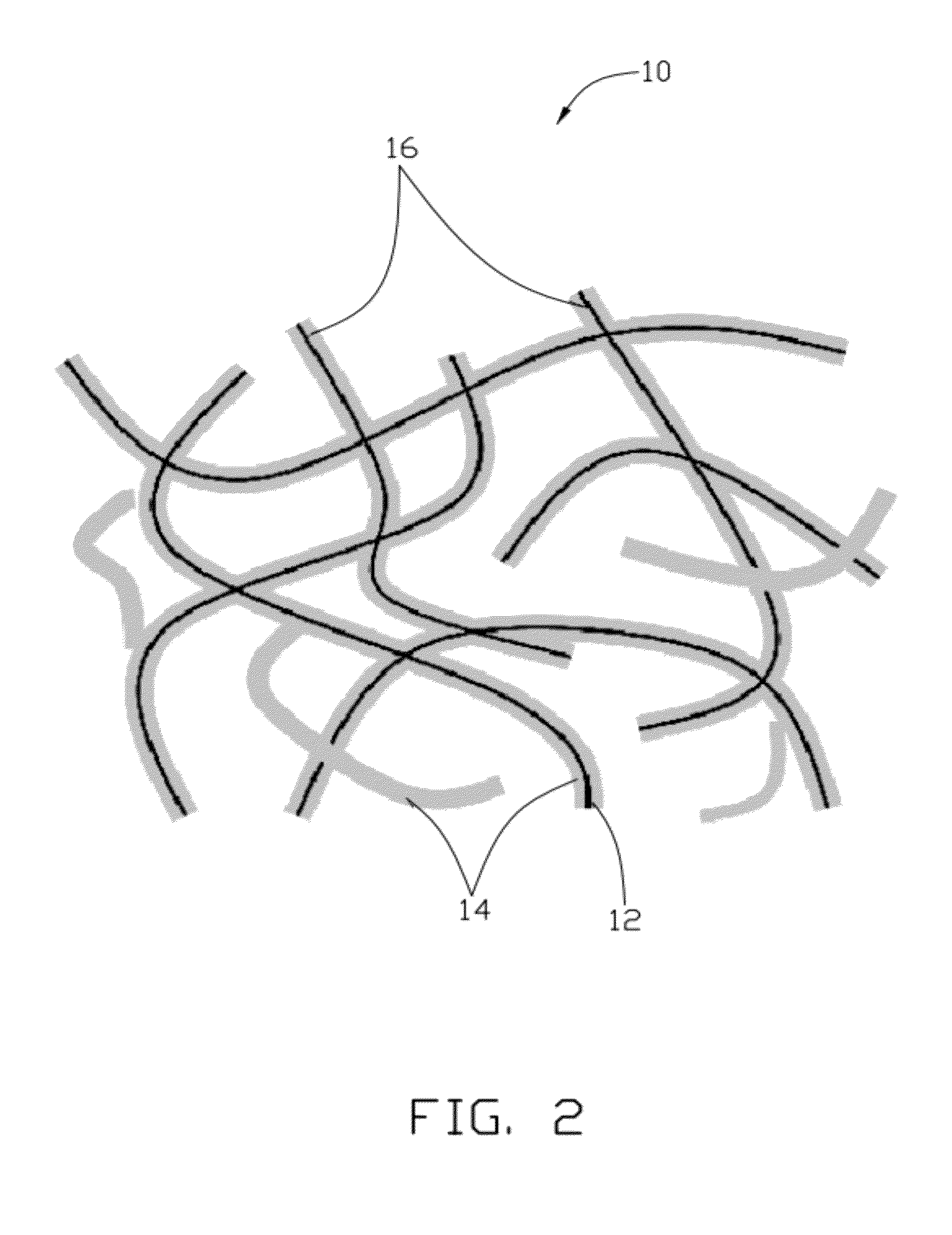Method for manufacturing carbon nanotube-conducting polymer composite
a carbon nanotube and polymer composite technology, applied in the direction of conductive materials, non-conductive materials with dispersed conductive materials, electrical appliances, etc., can solve the problems of reducing the resistance cnts cannot form a good electric conducting network, and the performance of carbon nanotube-conducting polymer composites is negatively affected
- Summary
- Abstract
- Description
- Claims
- Application Information
AI Technical Summary
Benefits of technology
Problems solved by technology
Method used
Image
Examples
Embodiment Construction
[0012]References will now be made to the drawings to describe, in detail, the present liquid crystal display.
[0013]Referring to FIG. 1, a method for preparing a carbon nanotube-conducting polymer composite includes the following steps of: (1) providing a CNT film; (2) compounding a conducting polymer with the CNT film by in-situ electrochemical polymerization.
[0014]In step (1), the CNT film can be a grown CNT film, a flocculated CNT film, a pressed CNT film, or drawn CNT film. In the present embodiment, the CNT film is the flocculated CNT film made by a flocculating method. The method of flocculating includes the following steps of: (1a) providing a plurality of CNTs used as raw material; (1b) dispersing the CNTs into a solvent to obtain a CNT floccule structure; (1c) separating the CNT floccule structure from the solvent; and (1d) shaping the CNT floccule structure into a CNT floccule film.
[0015]In step (1a), a plurality of CNTs are prepared in the present embodiment by the followi...
PUM
| Property | Measurement | Unit |
|---|---|---|
| constant voltage | aaaaa | aaaaa |
| voltage | aaaaa | aaaaa |
| length | aaaaa | aaaaa |
Abstract
Description
Claims
Application Information
 Login to View More
Login to View More - R&D
- Intellectual Property
- Life Sciences
- Materials
- Tech Scout
- Unparalleled Data Quality
- Higher Quality Content
- 60% Fewer Hallucinations
Browse by: Latest US Patents, China's latest patents, Technical Efficacy Thesaurus, Application Domain, Technology Topic, Popular Technical Reports.
© 2025 PatSnap. All rights reserved.Legal|Privacy policy|Modern Slavery Act Transparency Statement|Sitemap|About US| Contact US: help@patsnap.com


